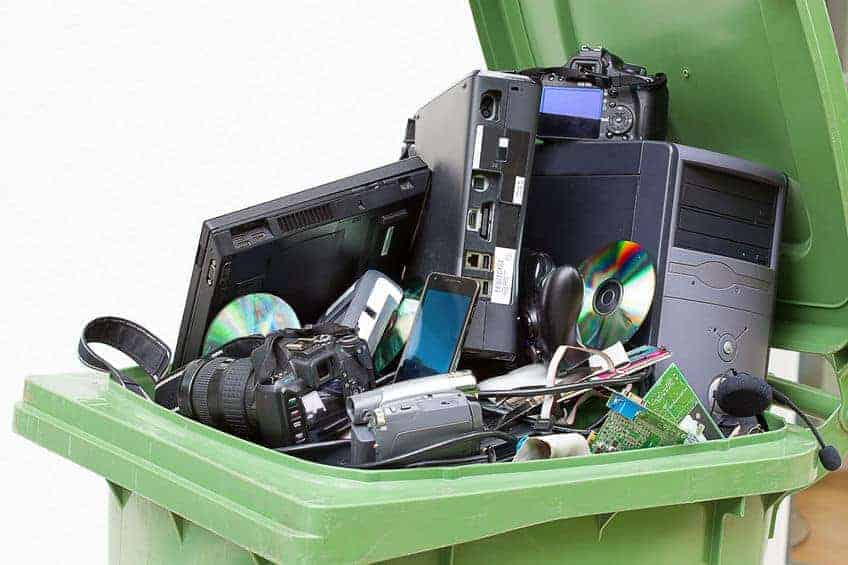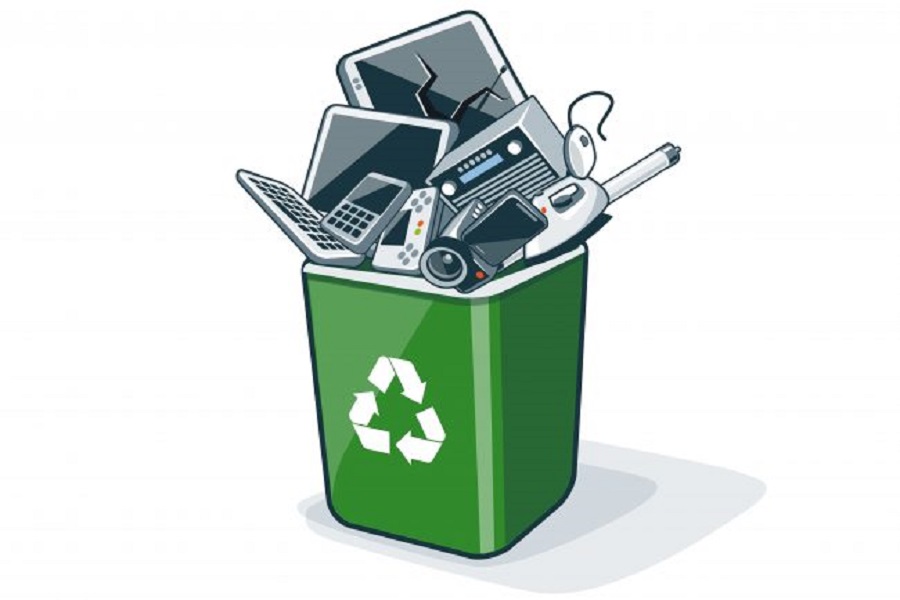Partner with R2 Certification Recyclers: Safeguard Data and Protect the Atmosphere
Partner with R2 Certification Recyclers: Safeguard Data and Protect the Atmosphere
Blog Article
Elevate Your E-Waste Monitoring With R2 Accreditation: a Comprehensive Summary
One secret technique to boost e-waste management techniques is by attaining R2 accreditation. By exploring the procedures and benefits associated with R2 qualification, a deeper understanding of exactly how it can reinvent e-waste administration approaches emerges, shedding light on a path towards sustainability and ethical disposal practices.
Significance of E-Waste Administration

When e-waste is not managed appropriately, these toxic substances can seep into the community, triggering injury to wild animals and potentially entering the food chain, posing risks to human health and wellness. The incorrect disposal of e-waste contributes to air pollution and greenhouse gas discharges, intensifying climate adjustment and ecological destruction.

Benefits of R2 Certification

Firstly, R2 accreditation boosts reputation by showcasing a company's devotion to sustainable methods. It assures consumers, partners, and stakeholders that the company adheres to rigorous criteria for e-waste monitoring - r2 certification. This trustworthiness can cause boosted count on and enhanced connections with customers who focus on environmental responsibility
Secondly, R2 certification assists reduce threats associated with inappropriate e-waste disposal. By adhering to the rigorous guidelines established forth by the qualification, companies can reduce the likelihood of data breaches, ecological contamination, and legal repercussions. This aggressive strategy safeguards the business's online reputation and decreases potential responsibilities.
Finally, R2 certification demonstrates a commitment to environmental stewardship - r2 certification. By responsibly managing electronic waste with certified processes, companies add to the preservation of sources, decrease of contamination, and promo of a round economy. This dedication not only benefits the setting but also lines up with progressing customer assumptions for lasting company methods
R2 Qualification Refine Review
Having actually established the advantages of R2 certification in advertising integrity, threat mitigation, and environmental stewardship, it is vital to currently detail the in-depth procedure associated with acquiring this accreditation. The R2 qualification process begins with an extensive evaluation of the organization's functional policies and treatments to ensure conformity with the R2 standard. This initial assessment is important in identifying any gaps that need to be dealt with before proceeding even more.
As soon as the company's methods align with over at this website the R2 standard needs, an independent third-party auditor carries out an on-site audit to examine the application and performance of these practices. This audit consists of a detailed review of paperwork, interviews with team, and physical inspections of facilities to validate conformity.
Complying with an effective audit, the organization gets an accreditation choice based on the auditor's searchings for. If authorized, the company is given R2 qualification, showing its dedication to liable e-waste monitoring. It is very important to note that preserving R2 accreditation requires continuous conformity with the criterion's requirements and click to read routine audits to ensure continued adherence to best techniques in e-waste recycling and disposal.
Secret Criteria for R2 Conformity
An important element of accomplishing R2 conformity is making sure that all digital waste (e-waste) processing centers satisfy rigid environmental and safety standards. To abide by R2 demands, companies have to stick to vital criteria that concentrate on accountable e-waste administration practices. These criteria include executing a recorded ecological, health and wellness, and safety and security management system, making certain the safe and secure handling of data-containing tools, and carrying out thorough downstream due diligence to track the last location of e-waste materials.
In addition, R2 compliance requires the correct screening, repair, and recycling of digital tools to prolong its helpful life and lessen environmental effect. Facilities looking for R2 qualification need to also prioritize employee wellness and safety by supplying needed training, individual safety visit our website tools, and a safe functioning setting. Furthermore, preserving thorough documents of e-waste handling activities and consistently going through audits by approved certifying bodies are important elements of showing continuous compliance with R2 criteria.
Effects of Sustainable E-Waste Practices
The execution of lasting e-waste methods based on R2 compliance not just makes sure ecological and safety and security criteria are met but additionally considerably influences the total lifecycle of electronic products. By sticking to R2 requirements, electronic waste monitoring procedures become a lot more efficient, reducing the environmental impact of digital items. Lasting e-waste practices assist in the appropriate disposal of digital elements, making certain that unsafe materials are handled responsibly and do not wind up polluting the environment.
In addition, lasting e-waste practices can add to task development in the recycling and refurbishment fields, cultivating economic growth while advertising ecological obligation. Generally, the fostering of lasting e-waste methods under R2 qualification serves as a critical step towards attaining a much more eco lasting electronic devices sector.
Final Thought
In verdict, carrying out appropriate e-waste monitoring methods is essential for ecological sustainability and resource conservation. R2 qualification plays a key role in making certain accountable handling and disposal of electronic waste. By sticking to the rigorous requirements stated by R2 requirements, companies can not just decrease their ecological influence however additionally add to a more sustainable future for generations to come.
One secret approach to raise e-waste administration practices is by obtaining R2 accreditation. By exploring the benefits and procedures linked with R2 certification, a much deeper understanding of how it can change e-waste monitoring strategies arises, losing light on a path towards sustainability and honest disposal methods.
The R2 certification procedure begins with an extensive testimonial of the company's functional plans and procedures to make certain conformity with the R2 standard. If authorized, the organization is granted R2 accreditation, showing its commitment to accountable e-waste management. Overall, the fostering of lasting e-waste methods under R2 certification serves as a critical step in the direction of attaining a much more ecologically sustainable electronic devices market.
Report this page